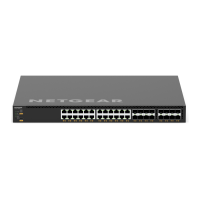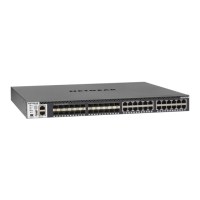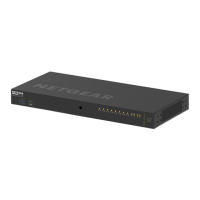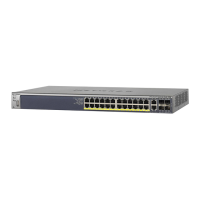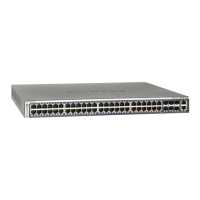OSPF and OSPFv3
397
M4300 Series and M4300-96X Fully Managed Switches User Manual
6. To refresh the page with the latest information on the switch, click the Update button.
The following table describes the nonconfigurable information that is displayed.
Table 145. Advanced OSPFv3 Link State Database
Field Description
Router ID The 32-bit integer in dotted-decimal format that uniquely identifies the
router within the autonomous system (AS). The router ID is set on the
OSPFv3 Configuration page.
To change the router ID you must first disable
OSPFv3. After you set the new router ID, you must reenable OSPFv3 for
the change to take effect. The default value is 0.0.0.0, although this is not a
valid router ID.
Area ID The ID of an OSPFv3 area to which one of the router interfaces is
connected.
An area ID is a 32-bit integer in dotted-decimal format that
uniquely identifies the area to which an interface is connected.
LSA T
ype The format and function of the link state advertisement. LSA Type is one of
the following:
• Router LSA.
A router can originate one or more router LSAs for a
given area. Each router LSA originated in an area describes the
collected states of all the router's interfaces to the area.
• Network LSA
.
A network LSA is originated for every link having two or
more attached routers, by the designated router
. It lists all the routers
attached to the link.
• Inter-Area Router LSA.
This type describes a prefix external to the
area, yet internal to the autonomous system. It is originated by an area
border router
.
• AS-External LSA.
This LSA type describes a path to a prefix external
to the autonomous system and is originated by an autonomous system
border router
.
• Link LSA.
A router originates a separate Link LSA for each attached
link. It provides router's link local address to routers attached to the link
and also inform them of a list of IPv6 prefixes to associate with the link.
• Intra-Area-Prefix LSA.
A link's designated router originates one or
more intra-area prefix lsas to advertise the link's prefixes throughout
the area.
A router can originate multiple intra-area-prefix lsas for a
given area to advertise its own prefixes and those of its attached stub
links.
LS ID The link state ID identifies the piece of the routing domain that is being
described by the advertisement.
The value of the LS ID depends on the
advertisement's LS type.
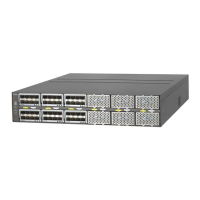
